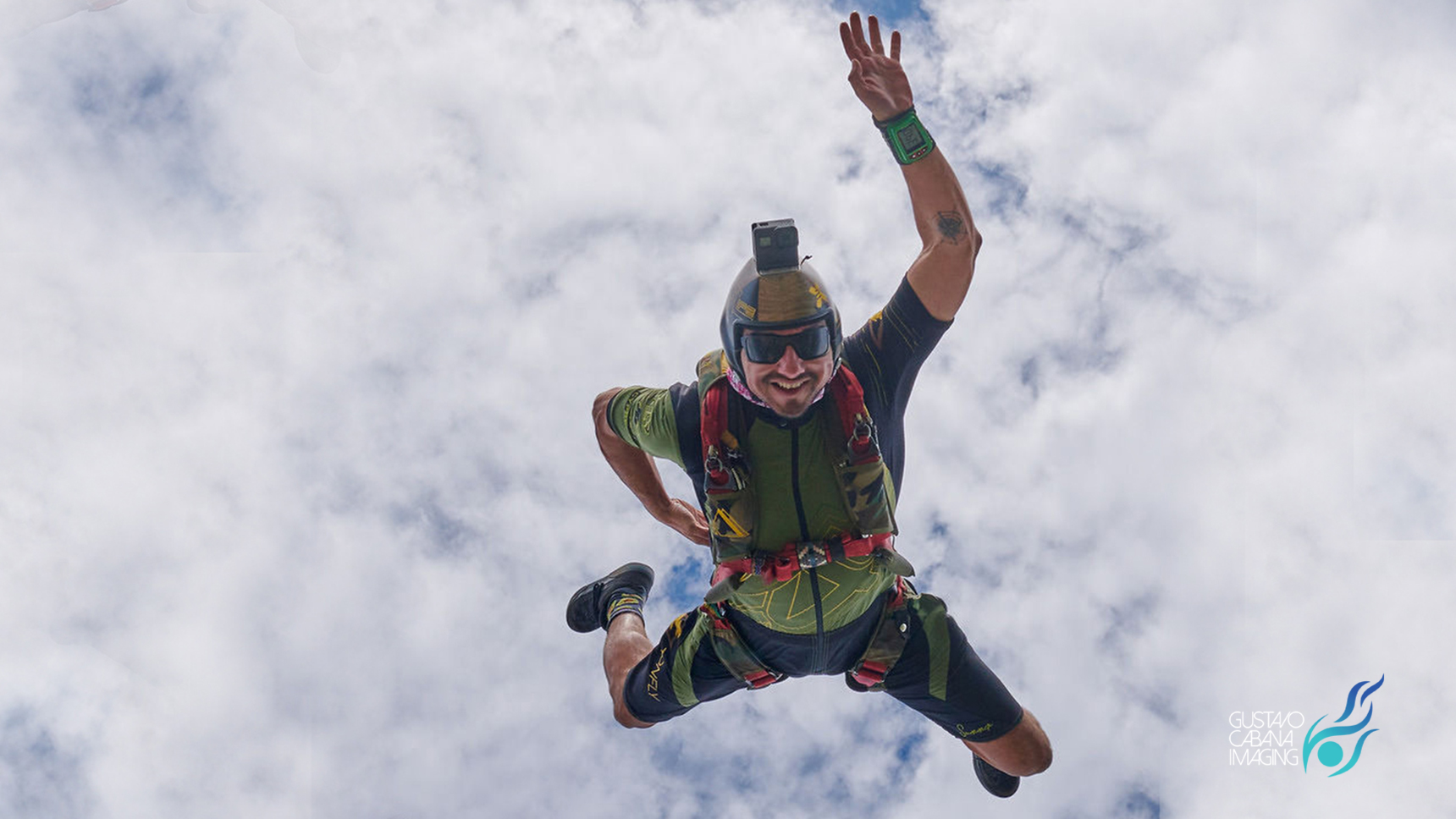Jesse “Tex” Leos on how to effectively fly through deployment for a smooth opening

Photo by Gustavo Cabana
In this two-part series, we’re taking a look at break-off and deployment. If you haven’t already read the first part on break-off, have a look. If you have, then you’re ready for this article on deployment…
Opening in a clear air space with a soft, smooth opening is something we all aim for. However, that’s not always a guarantee. Body position plays a big role in how your canopy opens. With so much importance in a body position at a crucial time in a skydive, it’s worth looking at some ways to do it well.
In this article, indoor and outdoor coach Jesse ‘Tex’ Leos of Skydive Spaceland shares some of his input on flying through deployment to increase your odds of having an on-heading, smooth opening.
Understanding the deployment sequence
One of the most overlooked aspects of our freefall time is our deployment sequence. Particularly in angle and vertical flying we must manage turning our vertical speed into horizontal distance during breakoff. With the increase in vertical speed, we can create tremendous horizontal speeds that are not effectively slowed down by simply stopping our track for a couple seconds before opening. When we examine our deployment sequence and how we slow down to help our canopy’s opening performance, we will find that we can use these moments to maximize our breakoff distance from others. The farther we can get away the safer we will be. The slower the vertical speed the more potential time we have for tracking and finishing our track at a higher altitude than others.
Learning how to progressively increase your pitch until you near the flattest ‘stall’ point is the goal

Photo by Tex
An effective deployment sequence after breakoff should begin once you have maximized your horizontal tracking distance and minimized your vertical speed. Maximizing your distance from others is obviously the goal of any successful breakoff. Learning how to progressively increase your pitch until you near the flattest ‘stall’ point is the goal. This requires both timing and tracking skills with pitch changes. In simple terms, when I begin to near my deployment, I think about tracking slightly above the horizon. This increases my angle of attack and I can feel myself slow down horizontally and vertically – similar to high-performance wingsuit flares prior to opening.
An effective deployment sequence after breakoff should begin once you have maximized your horizontal tracking distance and minimized your vertical speed
Eventually, you will develop enough body awareness and timing to create a big ‘X’ shape with your entire body at the end of your track. For beginners, make sure you get big with your arms and use them to slow your remaining forward speed before you pull. If you feel a bit slippery at these slow speeds at first, remain wide with the arms and legs for stability. As you get more comfortable with the increase in pressure from tracking ‘up’ at the end of breakoff, you can begin to maintain more pressure on your lower legs and even keep a slightly de-arched position to exaggerate the stalling feeling.

Photo by AD Imaging
Fly through your opening
Even after you have waved off and deployed, continue slowing down and flying your ‘X’. Too often flyers suddenly stop flying their body, causing their vertical speed to accelerate at opening. Your body and your canopy will thank you for this decrease in speed. I have had many students report immediate improvements in their canopy’s heading and opening performance from simply incorporating the ‘keep slowing down even at pull-time’ mentality.
Maintain your heading as you fly through your opening. I prefer to look slightly below the horizon after deploying so my neck is in a slightly better position to handle opening forces. Once you begin to have control with a slightly head-high body position at opening you will sit into your harness much smoother once your canopy reaches line stretch. No more feeling jerked upright or looking forward at your feet swinging out from underneath you. This smooth saddling upright in the harness will also allow you more control over your canopy’s heading without any unnecessary input on the risers.

Photo by Gustavo Cabana
Don’t look up…yet
Avoid looking up while your canopy is opening and focus on keeping your weight centered in your harness. Looking up is likely to cause a weight shift that will negatively impact the opening. Also, you are no longer scanning your peripheral for nearby potential canopy collisions at this crucial moment. Your neck will be in a dangerous position if you are looking up during a hard opening.
Get in this habit of helping your canopy by staying balanced in the harness as early as possible. Create this habit before you find yourself on a very responsive high-performance wing – or re-examine your procedures if you already are and struggle with consistent openings.
Stay away from these common mistakes
- Stopping a track by arching. You are no longer in AFF. It is time to update your deployment body position if you are going on jumps with tracking speeds much faster than you should ever open. You must learn how to effectively slow down. By simply arching quickly before pull time, you are likely increasing your vertical speed and still have a lot of residual horizontal speed.
- Arching hard at pull time. You have now learned to more effectively slow down your track than simply arching and pulling. However, you are increasing your vertical speed at the crucial moment when you want to go the slowest. Keep flying that big slow body position.
- Looking up at your canopy. This will not help your canopy’s opening. It also makes you less aware of potential canopy collisions and puts your neck in a dangerous position.

